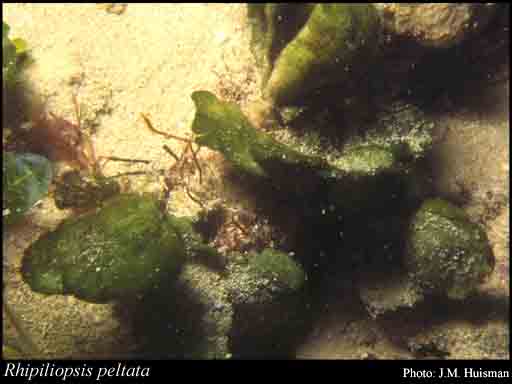- Reference
- Siboga-Exped.Monogr. 62:45 (1911)
- Conservation Code
- Not threatened
- Naturalised Status
- Native to Western Australia
- Name Status
- Current

Scientific Description
Habit and structure. Thallus medium to dark green, (1–)2–4(–6) cm high and (0.5–)1–2(–7) cm across, with a short stipe to 1 cm long broadening gradually or very rapidly into an ovate, reniform or irregularly elongate lamina, occasionally slightly lobed or lacerate, usually faintly zonate, thin (0.5–1 mm and several filaments thick), felt-like and spongy. Filaments slender, (12–)18–25 µm in diameter, thin walled, repeatedly subdichotomous and laxly interwoven, constricted adjacent to a subdichotomy, with branch ends forming the surface layer; chloroplasts ovoid, amyloplasts present.
Reproduction. From ovoid to pyriform, stalked zooidangia formed laterally on the medullary filaments.
Distribution. From Hopetoun, W. Aust., to Inverloch, Vic.
Habitat. From low tide level (shaded) to 31 m deep on rough-water coasts.
[After Womersley, Mar. Benthic Fl. Southern Australia I: 248 (1984)]
Distribution
- IBRA Regions
- Jarrah Forest.
- IBRA Subregions
- Southern Jarrah Forest.
- IMCRA Regions
- Central West Coast, Leeuwin-Naturaliste, WA South Coast.
- Local Government Areas (LGAs)
- Albany, Cockburn, Esperance, Wanneroo.